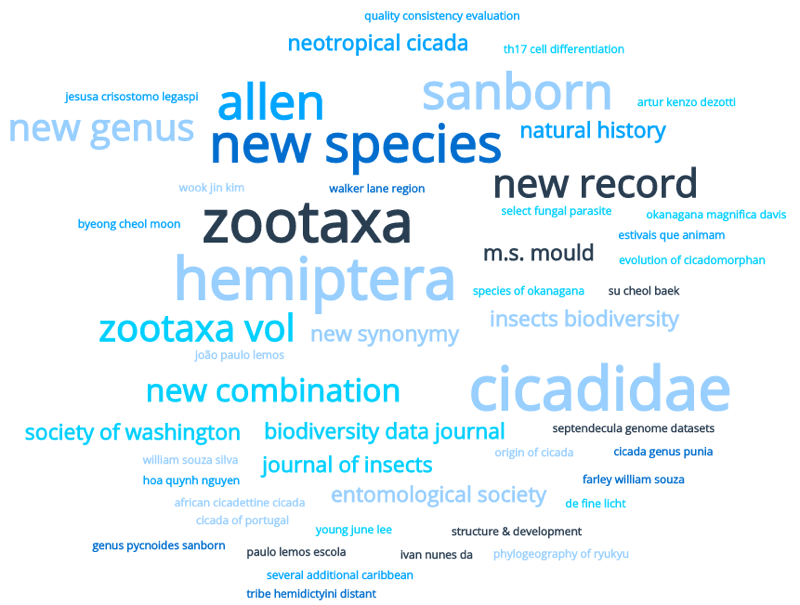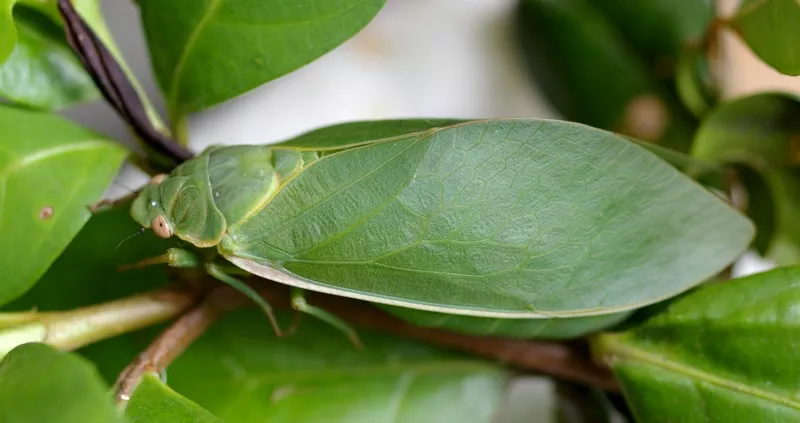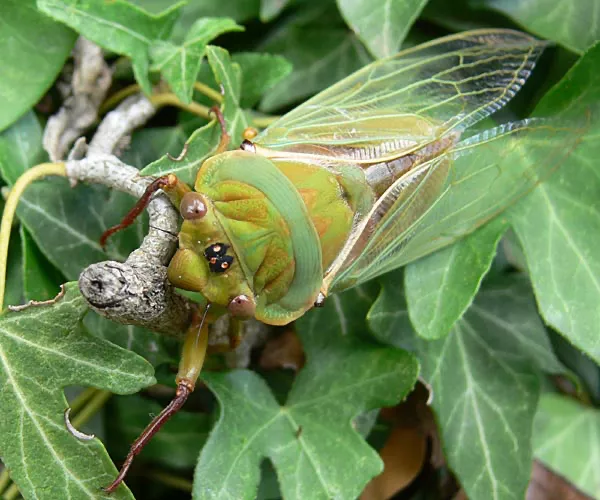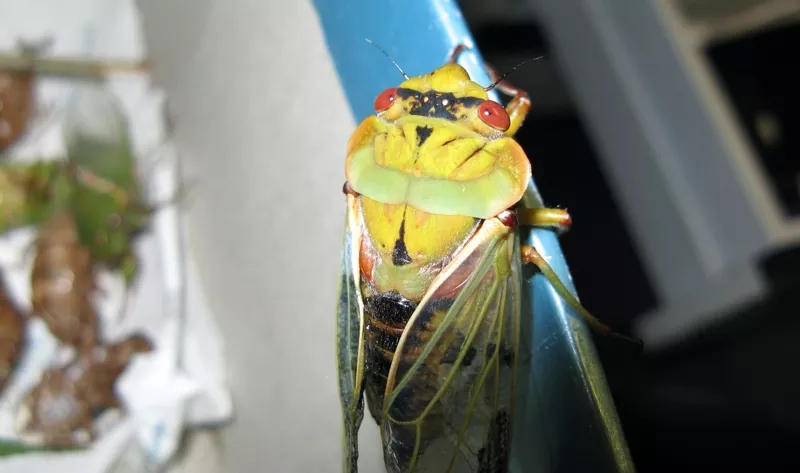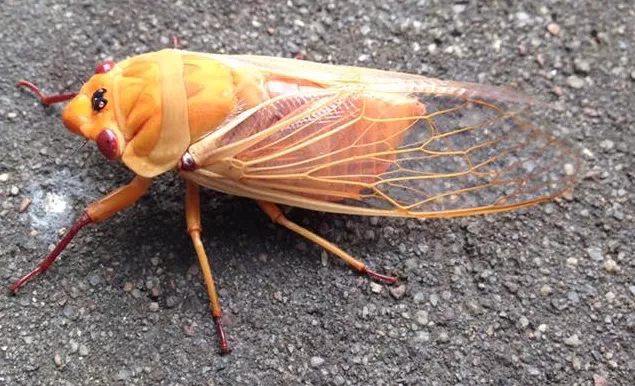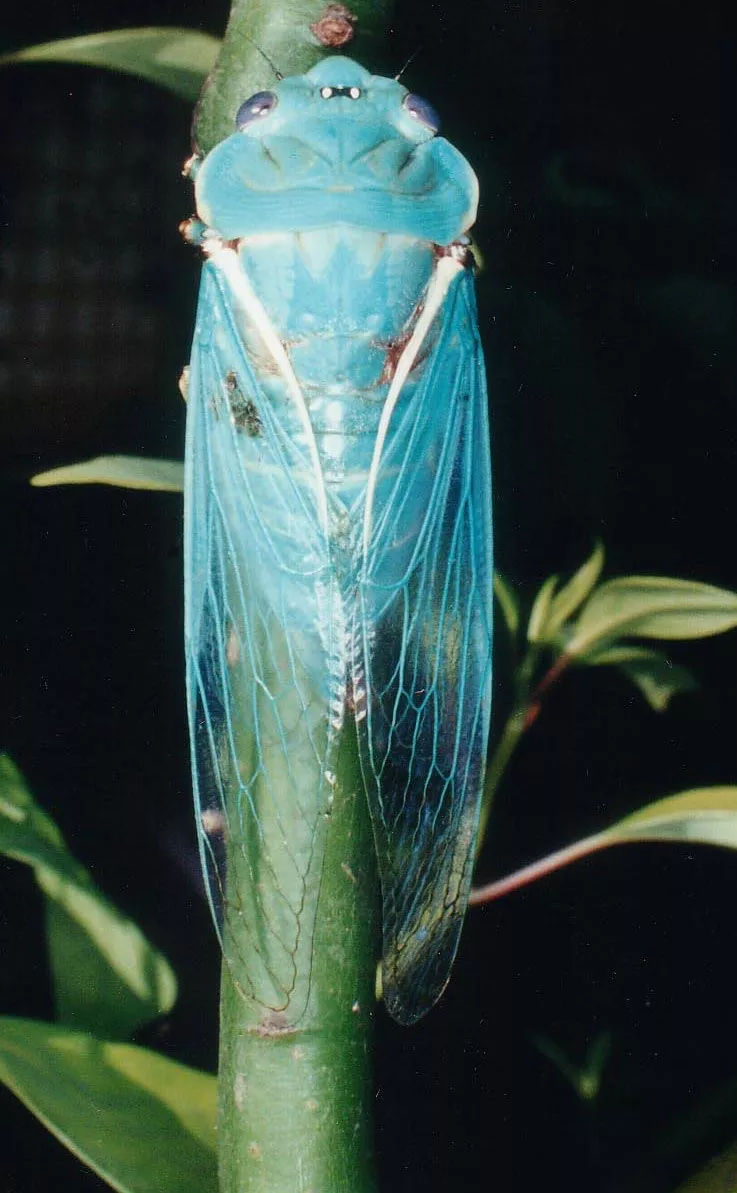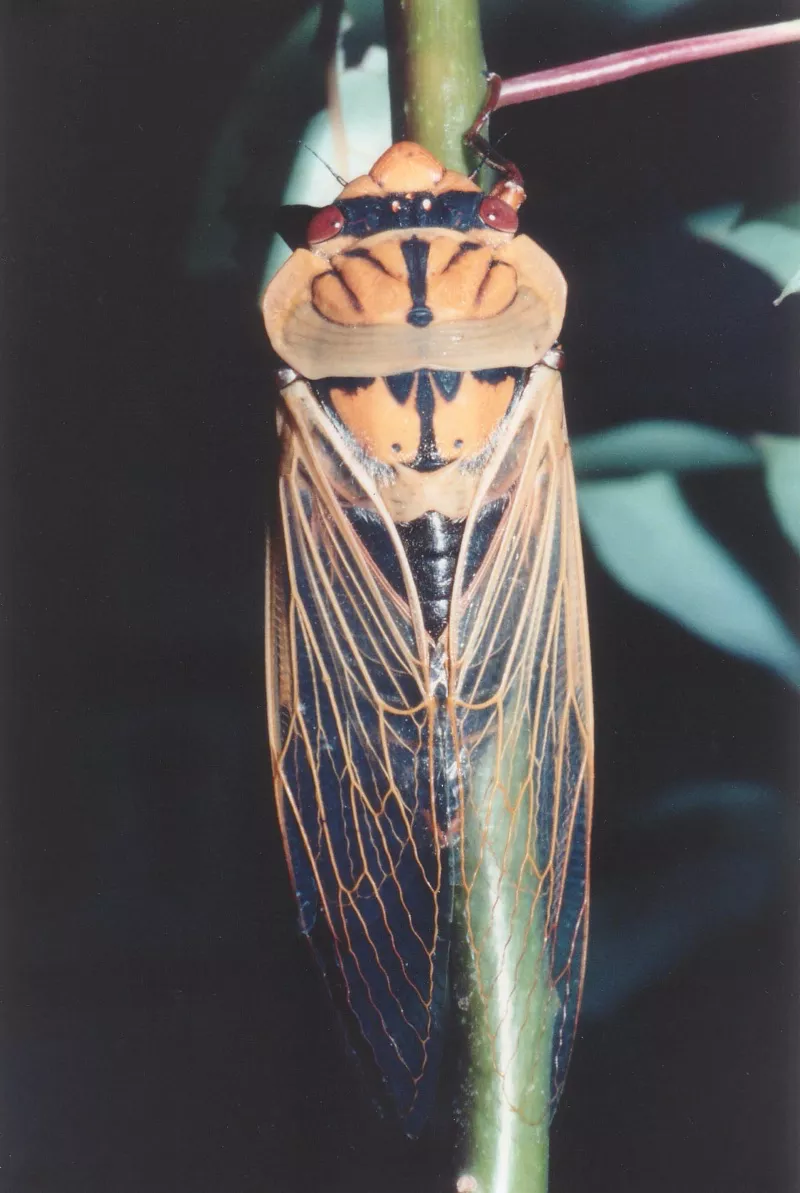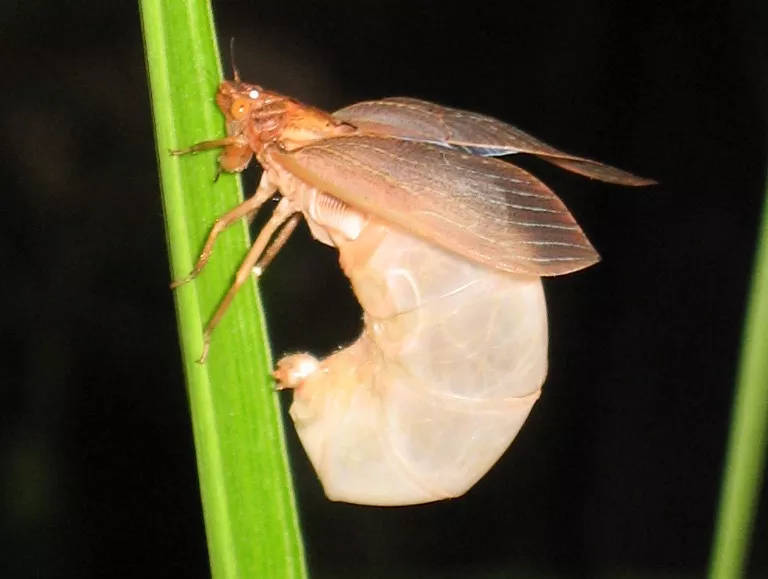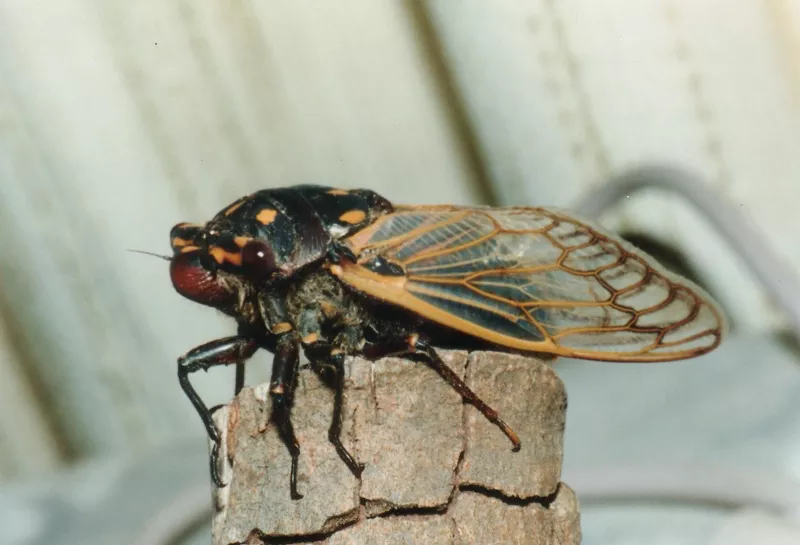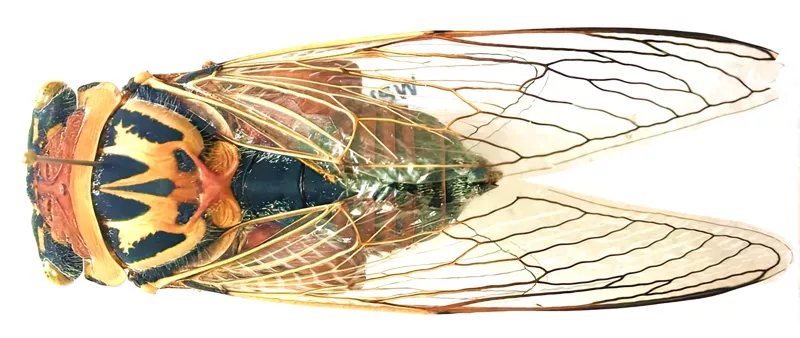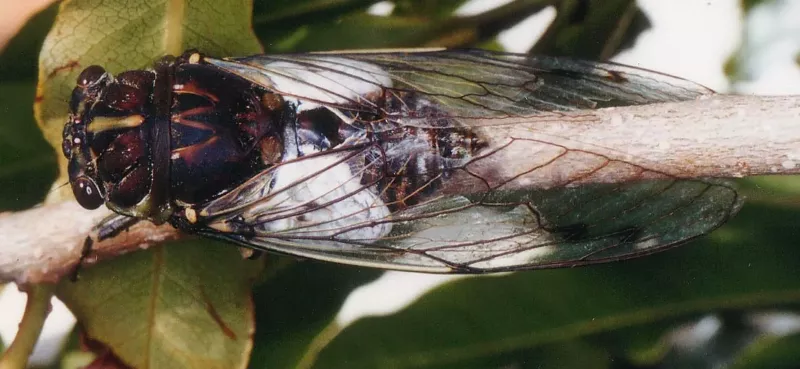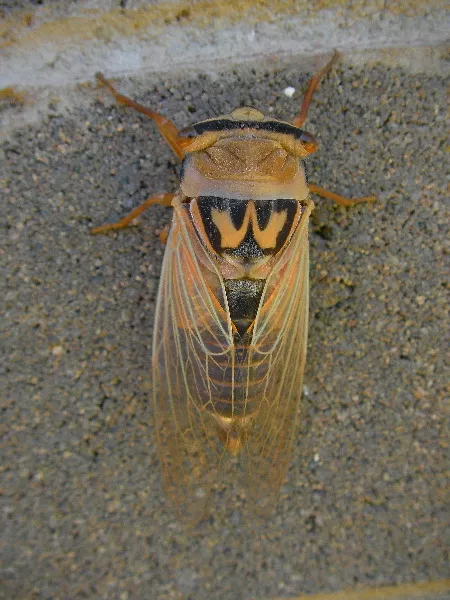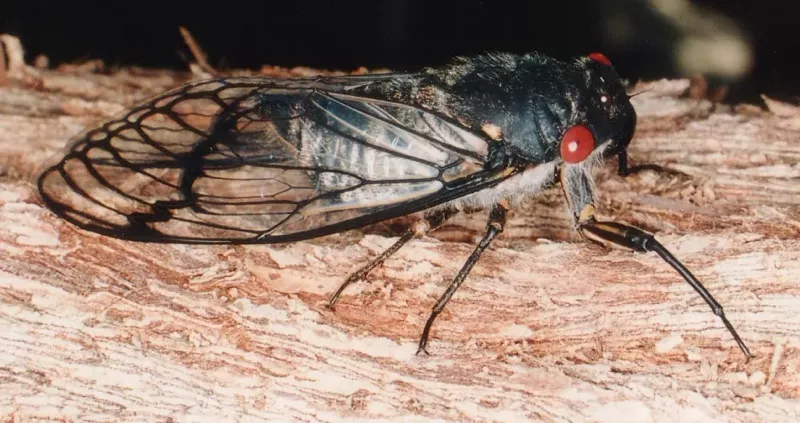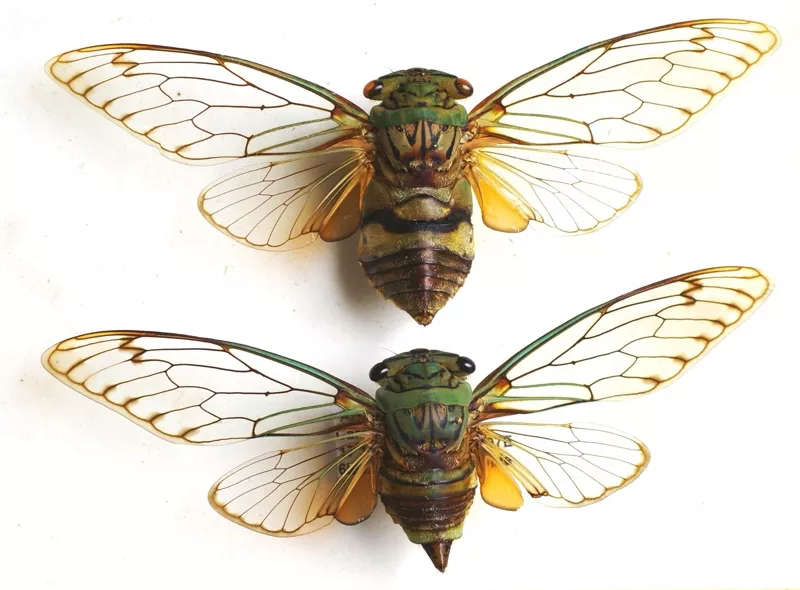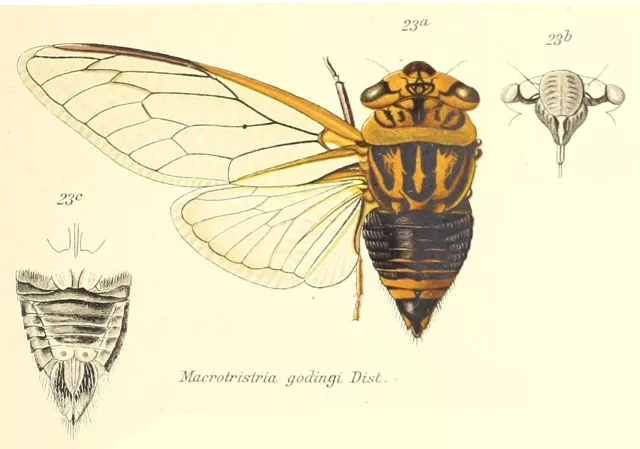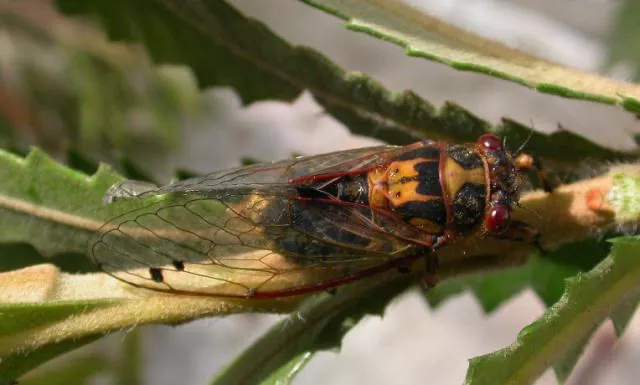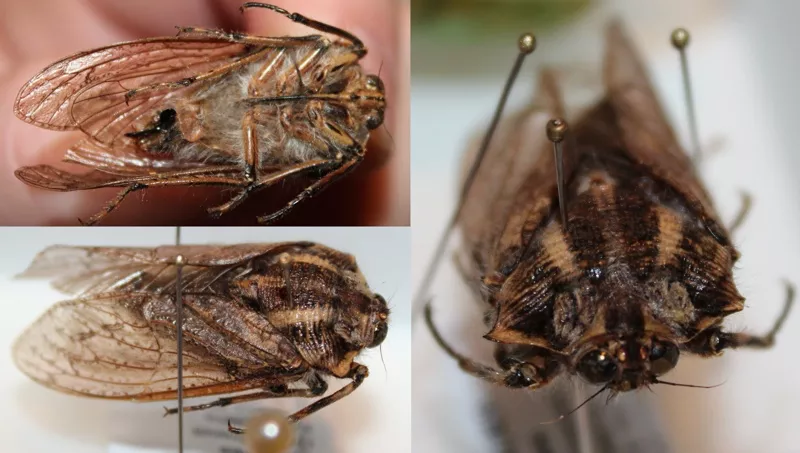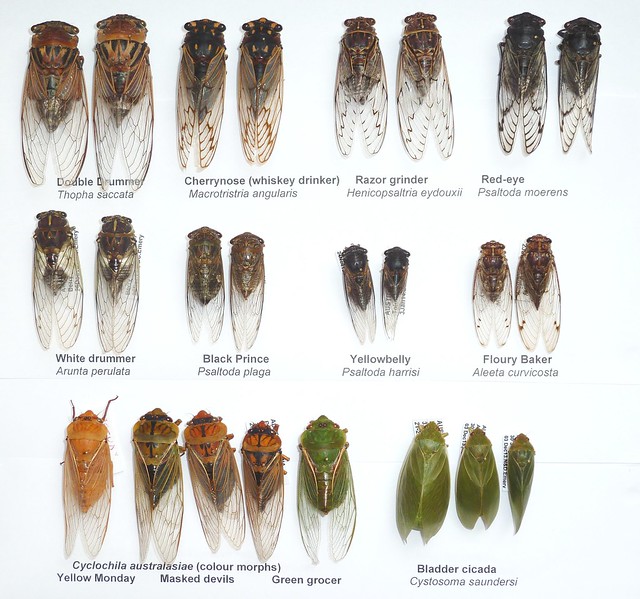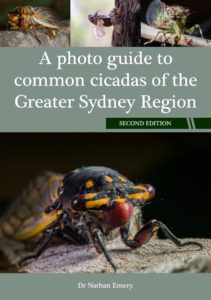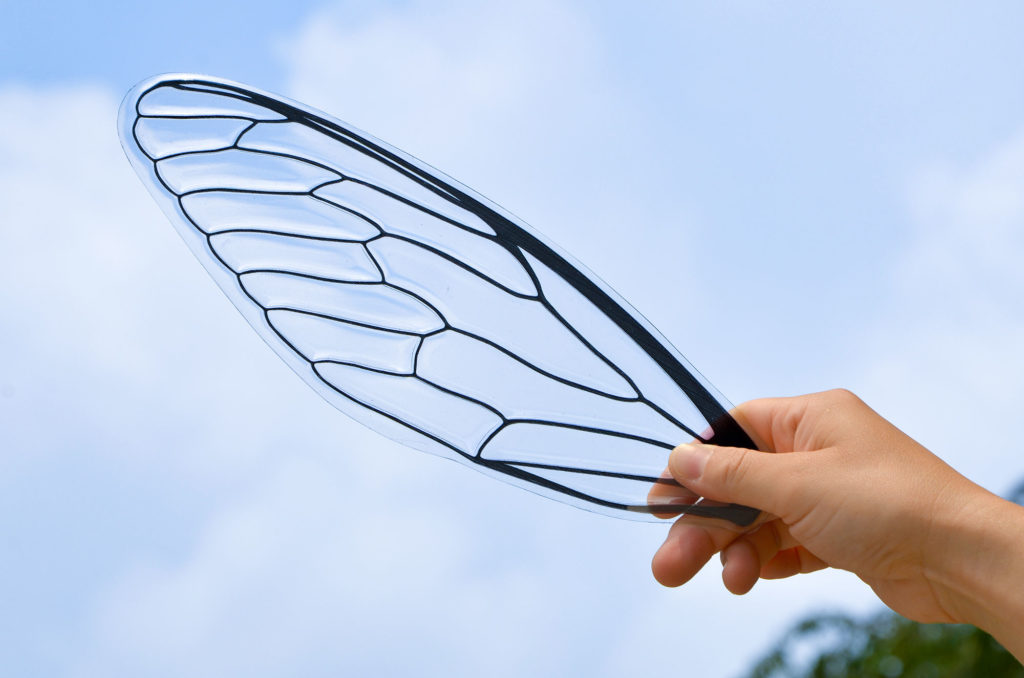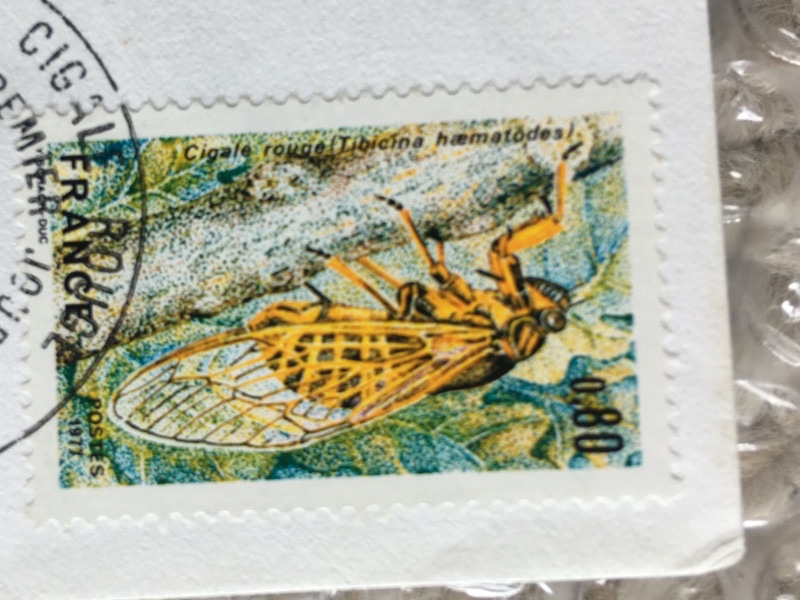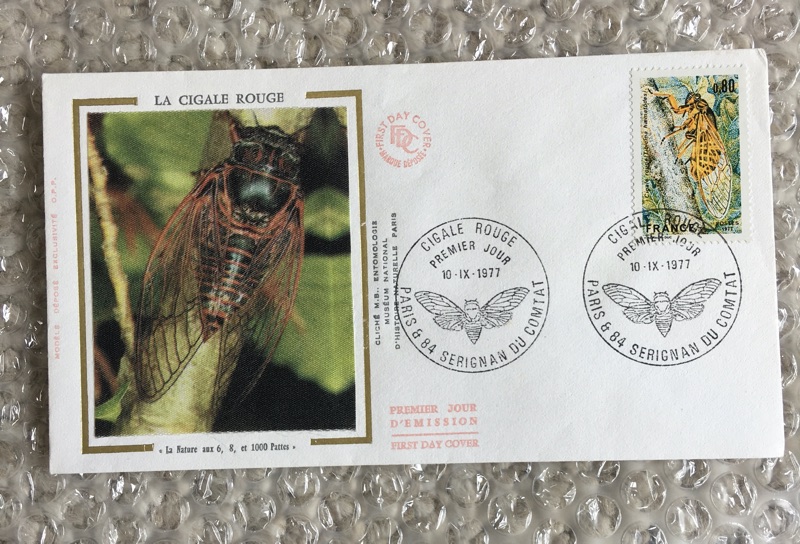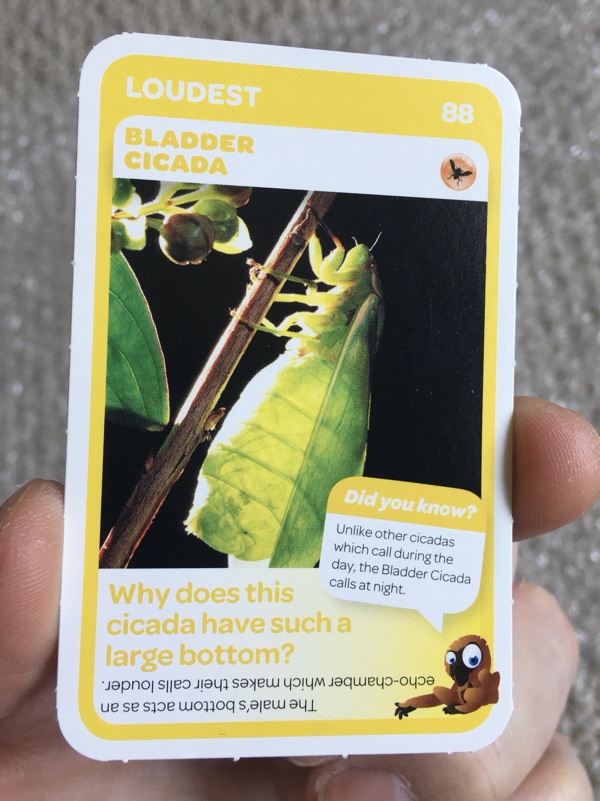2020 was quite a year. In spite of everything going on in the world, plenty of cicada research was published. Around 40 in all.
Below you will find a list organized by month. If I missed any, please email me at cicadamania@gmail.com. Here are the pages for 2019, 2018, and 2017.
December
Title: Cytogenetic characterization of periodical cicadas (Hemiptera: Cicadidae: Magicicada)
Authors: Gayane Karagyan, Natalia Golub, Teiji Sota
Journal: Eur. J. Entomol. 117: 474-480, 2020
DOI: https://doi.org/10.14411/eje.2020.050
Title: Phylogeography of Ryukyu insular cicadas: Extensive vicariance by island isolation vs accidental dispersal by super typhoon
Authors: Soichi Osozawa, Kenichi Kanai, Haruo Fukuda, John Wakabayashi
Journal: bioRxiv
DOI: https://doi.org/10.1101/2020.12.10.419127
Notes: Not peer reviewed yet.
November
Title: A new genus and three new species of South African Cicadettini (Hemiptera: Cicadidae: Cicadettinae)
Authors: Allen F. Sanborn, Martin H. Villet.
Journal: Zootaxa, Vol 4885, No 4.
DOI: https://doi.org/10.11646/zootaxa.4885.4.7
Title: The cicadas (Hemiptera: Cicadidae) of Ecuador including the description of five new species, a new subtribe, four new synonymies, and fifteen new records
Author: Allen F. Sanborn
Journal: Zootaxa Vol 4880, No 1
DOI: https://doi.org/10.11646/zootaxa.4880.1.1
Title: The cicadas (Hemiptera: Cicadidae) of Suriname including the description of two new species, five new combinations, and three new records
Author: Allen F. Sanborn
Journal: Zootaxa Vol 4881, No 3
DOI: https://doi.org/10.11646/zootaxa.4881.3
October
Title: A revision of the Australian cicada genus Punia Moulds, 2012 (Cicadidae: Cicadettinae: Cicadettini) with the description of four new species.
Author: M.S. Moulds.
Journal: Zootaxa, Vol 4860, No 1.
DOI: https://doi.org/10.11646/zootaxa.4860.1.5
Title: A new species of Okanagana from the Walker Lane region of Nevada and California (Hemiptera: Auchenorrhyncha: Cicadidae)
Author: Will Chatfield-Taylor, Jeffrey A. Cole
Journal: Zootaxa, Vol 4868, No 4
DOI: https://doi.org/10.11646/zootaxa.4868.4.3
Title: A New Species of Herrera Distant, 1905 (Hemiptera: Cicadoidea: Cicadidae: Cicadettinae: Carinetini) from Panama with New Records for Two Additional Species
Author: Allen F. Sanborn
Journal: Proceedings of the Entomological Society of Washington, 122(4):907-915 (2020).
DOI: https://doi.org/10.4289/0013-8797.122.4.907
Title: Checklist and provisional atlas of singing cicadas (Hemiptera: Cicadidae) of Bulgaria, based on bioacoustics
Author: Tomi Trilar, Ilia Gjonov, Matija Gogala
Journal: Biodiversity Data Journal, 8.e54424
DOI: https://doi.org/10.3897/BDJ.8.e54424
September
Title: N-Acetyldopamine derivatives from Periostracum Cicadae and their regulatory activities on Th1 and Th17 cell differentiation
Authors: Punam Thapaa, Ye Gua, Yun-Seo Kil, Su Cheol Baek, Ki Hyun Kim, Ah-Reum Han, Eun Kyoung Seo, Hyukjae Choi, Jae-Hoon Chang, Joo-Won Nam
Journal: Bioorganic Chemistry, Volume 102
DOI: https://doi.org/10.1016/j.bioorg.2020.104095
Title: Two new species of Neotropical cicadas (Hemiptera: Cicadidae: Cicadettinae) from southeastern Brazil
Author: Allen F. Sanborn
Journal: Journal of Insect Biodiversity, Vol 19, No 1
DOI: https://doi.org/10.12976/jib/2020.19.1.3
Title: Predator avoidance leads to separate emergence cycles in the protoperiodical Okanagana magnifica Davis, 1919 (Hemiptera: Cicadidae)
Author: Will Chatfield-Taylor
Journal: The Pan-Pacific Entomologist, 96(3):135-141 (2020)
DOI: https://doi.org/10.3956/2020-96.3.135
Title: Cicadas of Portugal, those musicians which give joy during summer: towards a better knowledge of their Natural History and Conservation
Author: J. A. Quartau
Journal: Naturae Digital, Revista de Cultura CientÃfica do Museu Virtual da Biodiversidade da Universidade de Évora, 10 Setembro de 2020.
Link: Cigarras de Portugal, esses músicos estivais que animam o verão com as suas melopeias: para um melhor conhecimento da sua história natural e conservação.
August
Title: Ecological indices of phytophagous Hemiptera and their natural enemies on Acacia auriculiformis (Fabales: Fabaceae) plants with or without dehydrated sewage sludge application in a degraded area
Authors: Luan Rocha Dourado, Germano Leão Demolin-Leite, Marcus Alvarenga Soares, Gustavo Leal Teixeira, Farley William Souza Silva, Regynaldo Arruda Sampaio, Jose Cola Zanuncio, Jesusa Crisostomo Legaspi
Journal: PLoS ONE 15(8): e0237261
DOI: https://doi.org/10.1371/journal.pone.0237261
Title: The cicadas (Hemiptera: Cicadidae) of Trinidad and Tobago including the description of three new species and seven new records, with new records for several additional Caribbean Islands
Author: Allen F. Sanborn
Journal: Zootaxa Vol 4838, No 4
DOI: https://doi.org/10.11646/zootaxa.4838.4
Title: Reassessment of the cicada fossil Oncotympana lapidescens Zhang, 1989 with the description of a new genus (Hemiptera, Cicadoidea, Cicadidae)
Author: M.S. Moulds
Journal: Palaeoentomology, Vol 3, No 4
DOI: https://doi.org/10.11646/palaeoentomology.3.4.1
Title: Standardisation of bioacoustic terminology for insects
Author: Edward Baker, David Chesmore
Journal: Biodiversity Data Journal, 8:e54222
DOI: https://doi.org/10.3897/BDJ.8.e54222
Title: Four new species of cicadas in the Yoyetta abdominalis (Distant) species group (Hemiptera: Cicadidae: Cicadettinae) from southeastern Australia
Author: Lindsay W. Popple, David L. Emery
Journal: Records of the Australian Museum, 72(4): 123—147
DOI: https://doi.org/10.3853/j.2201-4349.72.2020.1765
July
?
June
Title: Behavioral betrayal: How select fungal parasites enlist living insects to do their bidding
Authors: Brian Lovett, Angie Macias, Jason E. Stajich, John Cooley, Jørgen Eilenberg, Henrik H. de Fine Licht, Matt T. Kasson
Journal: PLoS Pathog 16(6): e1008598
DOI: https://doi.org/10.1371/journal.ppat.1008598
Title: Look closely and listen carefully: unexpected cicada diversity in northern Sardinia, with the description of a new species (Cicadidae: Tibicina)
Author: Thomas Hertach
Journal: Zoological Journal of the Linnean Society, zlaa047
DOI: https://doi.org/10.1093/zoolinnean/zlaa047
Title: Additions to the cicada (Insecta: Hemiptera: Cicadidae) fauna
of India: first report and range extension of four species with notes on their natural history from Meghalaya
Authors: Vivek Sarkar, Cuckoo Mahapatra, Pratyush P. Mohapatra & Manoj V. Nair
Journal: Journal of Threatened Taxa, Vol. 12 | No. 9 | Pages: 16021—16042
DOI: 10.11609/jot.5668.12.9.16021-16042
May
Title: The cicadas (Hemiptera: Cicadidae) of Peru including the description of twenty-four new species, three new synonymies, and thirty-seven new records
Author: Allen F. Sanborn
Journal: Zootaxa Vol 4785, No 1
DOI: https://doi.org/10.11646/zootaxa.4785.1
Title: Molecular and Topographical Organization: Influence on Cicada Wing Wettability and Bactericidal Properties
Authors: Jessica Román-Kustas, Jacob B. Hoffman, Julian H. Reed, Andrew E. Gonsalves, Junho Oh, Longnan Li, Sungmin Hong, Kyoo D. Jo, Catherine E. Dana, Nenad Miljkovic, Donald M. Cropek, Marianne Alleyne
Journal: Advanced Material Interfaces, Volume7, Issue10
DOI: https://doi.org/10.1002/admi.202000112
Title: True cicadas (Cicadidae) as prey for the birds of the Western Palearctic: a review
Author: Pere Pons
Journal: Avian Research volume 11, Article number: 14 (2020)
DOI: https://doi.org/10.1186/s40657-020-00200-1
Title: Evolutionary relationships among Massospora spp. (Entomophthorales), obligate pathogens of cicadas
Authors: Angie M. Macias, David M. Geiser, Jason E. Stajich, Piotr Lukasik, Claudio Veloso, DeAnna C. Bublitz, Matthew C. Berger, Greg R. Boyce , Kathie Hodge & Matt T. Kasson
Journal: Mycologia, Volume 112, 2020
DOI: https://doi.org/10.1080/00275514.2020.1742033
April
Title: New genus and species of Leptopsaltriini (Hemiptera: Cicadidae: Cicadinae) from China and Vietnam, with colour-changing behaviour reported for the first time in Cicadoidea
Authors: Cong Wei, Siyue Wang, Masami Hayashi, Miao He, Hong Thai Pham
Journal: Zootaxa Vol 4759, No 2.
DOI: https://doi.org/10.11646/zootaxa.4759.2
Title: Replacement name for the cicada genus Pycnoides Sanborn, 2020
(Hemiptera: Cicadidae: Cicadinae: Platypleurini) and sixteen new combinations
Author: Allen F. Sanborn
Journal: Zootaxa Vol 4759, No 4
DOI: https://doi.org/10.11646/zootaxa.4759.4
Title: Eight new species and three new records of Neotropical cicadas (Hemiptera: Cicadidae) from Venezuela
Author: Allen F. Sanborn
Journal: Journal of Insect Biodiversity, Vol 16, No 1
DOI: https://doi.org/10.12976/jib/2020.16.1.2
March
Title: Redefinition of the cicada tribe Hemidictyini Distant, 1905, status of the tribe Iruanini Boulard, 1993 rev. stat., and the establishment of Hovanini n. tribe and Sapantangini n. tribe (Hemiptera: Cicadidae)
Authors: Allen F. Sanborn, David C. Marshall, Maxwell S. Moulds, Stéphane Puissant, Chris Simon
Journal: Zootaxa, Vol 4747, No 1.
DOI: https://doi.org/10.11646/zootaxa.4747.1.5
Title: On the morphology and evolution of cicadomorphan tymbal organs
Authors: Leonidas-Romanos Davranoglou, Beth Mortimer, Graham K.Taylor, Igor Malenovský
Journal: Arthropod Structure & Development, Volume 55
DOI: https://doi.org/10.1016/j.asd.2020.100918
Title: A new species of the genus Tanna Distant (Hemiptera: Cicadidae: Cicadinae: Leptopsaltriini) from Vietnam, with notes on taxonomic changes in Tanna
Authors: Young June Lee, David Lyall Emery
Journal: Journal of Asia-Pacific Biodiversity, Volume 13, Issue 1
DOI: https://doi.org/10.1016/j.japb.2019.09.007
Title: Evaluation of Organically Acceptable Methods to Control Periodical Cicada (Hemiptera: Cicadidae) Oviposition Injury on Nonbearing Apple Trees
Author: Daniel L. Frank
Journal: J. of Entomological Science, 55(2):210-218 (2020)
DOI: https://doi.org/10.18474/0749-8004-55.2.210
February
Title: Automated acoustic detection of a cicadid pest in coffee plantations
Authors: João Paulo Lemos Escola, Rodrigo Capobianco Guido, Ivan Nunes da Silva, Alexandre Moraes Cardoso, Douglas Henrique Bottura Maccagnan, Artur Kenzo Dezotti
Journal: Computers and Electronics in Agriculture, Volume 169.
DOI: https://doi.org/10.1016/j.compag.2020.105215
Title: Quality consistency evaluation on four origins of Cicadae Periostracum by ultra-performance liquid chromatography coupled with quadrupole/time-of-flight mass spectrometry analysis
Authors: Xin-Ci Cao, Xiao-Ya Zhang, Jin-Di Xu, Hong Shen, Shan-Shan Zhou, He Zhu, Ming Kong, Wei Zhang, Gui-Rong Zhou, Yi He, Qian Mao, Song-Lin Li
Journal: Journal of Pharmaceutical and Biomedical Analysis, Volume 179
DOI: https://doi.org/10.1016/j.jpba.2019.112974
Title: Afromelampsalta, a new genus, a new species, and five new combinations of African cicadettine cicadas (Hemiptera: Cicadidae: Cicadettinae)
Authors: Allen F. Sanborn, Martin H. Villet
Journal: Zootaxa, Vol 4731, No 4.
DOI: https://doi.org/10.11646/zootaxa.4731.4
Title: Emergence of a novel interaction between brown bear and cicada due to anthropogenic habitat modification
Authors: Kanji Tomita, Tsutom Hiura
Journal: bioRxiv
DOI: https://doi.org/10.1101/2020.02.22.960583
Notes: Not peer reviewed yet.
Title: Dyticodopoea and Pygmaeodopoea, New Genera for the Central American Cicada Species Previously Assigned to Odopoea Stål, 1861 (Hemiptera: Cicadoidea: Cicadidae: Cicadinae: Zammarini)
Author: Allen F. Sanborn
Journal: Proceedings of the Entomological Society of Washington, 122(1):117-126 (2020).
DOI: https://doi.org/10.4289/0013-8797.122.1.117
January
Title: A new species of Oligoglena Horváth, 1912 (Hemiptera: Cicadidae) from Mediterranean Turkey
Author: Abbas Mol.
Journal: Zoology in the Middle East
DOI: https://doi.org/10.1080/09397140.2020.1711624
Title: Not all cicadas increase thermal tolerance in response to a temperature gradient in metropolitan Seoul
Authors: Hoa Quynh Nguyen, Hortense Serret, Yoonhyuk Bae, Seongmin Ji, Soyeon Chae, Ye Inn Kim, Jeongjoo Ha & Yikweon Jang
Journal: Sci Rep 10, 1343 (2020)
DOI: https://doi.org/10.1038/s41598-020-58276-0
Title: Redescription of the cicada genus Pycna Amyot & Audinet-Serville, 1843 (Hemiptera: Cicadidae: Cicadinae: Platypleurini) with the formation of two new genera, one new species, one revised species status and twenty-four new combinations
Author: Allen F. Sanborn
Journal: Zootaxa, Vol 4722, No 2
DOI: https://doi.org/10.11646/zootaxa.4722.2.3
No month
Title: Rapid authentication of the Cicadidae Periostracum using a COI sequence-based SCAR markers
Authors: Pureum Noh, Wook Jin Kim, Sungyu Yang, Inkyu Park, Jun-Ho Song, Goya Choi, Byeong Cheol Moon
Journal: Integrative Medicine Research, Volume 9, Supplement 1
DOI: https://doi.org/10.1016/j.imr.2020.100580
Data
Magicicada septendecim & Magicicada septendecula genome datasets including genome, transcript and protein sequence, annotation and a data report
Site: National Library of Medicine
Link: Magicicada genome datasets
